NIL
Super Regional Priority Ticket Information
Story Links MORGANTOWN, W.Va. – Fresh off its second consecutive NCAA Regional title, the West Virginia University baseball team will head to Baton Rouge, Louisiana for the NCAA Super Regionals. The Super Regional round will begin on Saturday, June 7 at 2 p.m. Sunday’s game two will be at 6 p.m. with game […]
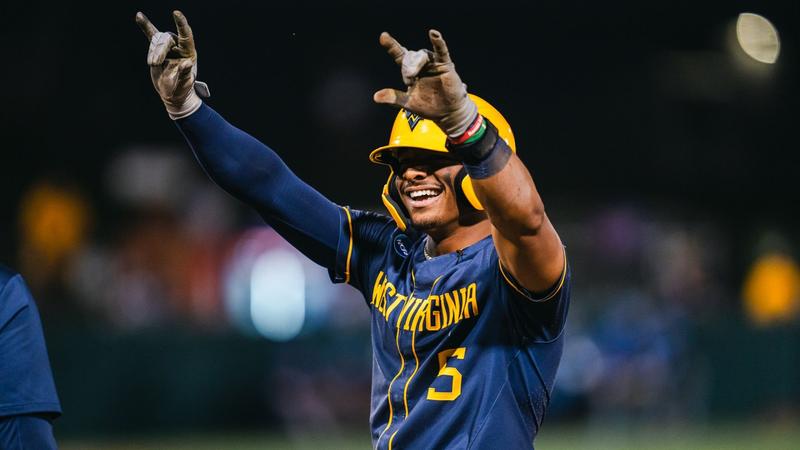
MORGANTOWN, W.Va. – Fresh off its second consecutive NCAA Regional title, the West Virginia University baseball team will head to Baton Rouge, Louisiana for the NCAA Super Regionals. The Super Regional round will begin on Saturday, June 7 at 2 p.m. Sunday’s game two will be at 6 p.m. with game three’s if necessary game time on Monday still to be determined.
All 2025 WVU Baseball season ticket holders and current MAC members at the $10,000 membership level and above who are not season ticket holders can now log in to their account at WVUGAME.com to purchase priority postseason tickets. Fans may purchase up to four (4) Super Regional all-session tickets from June 3 through June 4 at 12 pm, with seat locations subject to availability. These purchases can be made by logging into their account at WVUGAME.com, navigating to “Event List” under the “Buy Tickets” tab, then selecting “Baseball” and “Baseball Post-Season Tickets.” Additional non-season ticket purchases are subject to availability and will be evaluated based on MAC annual membership levels and the priority points ranking within each level.
These limited tickets will be in reserved seating and will be priced at $45. Exact seat locations will be confirmed when allocated by the Mountaineer Ticket Office.
Fans will be notified by end of day on Wednesday, June 4 if their ticket request has been processed. All tickets will be e-mailed to the customer e-mail address provided during the request.
Free parking for fans is available in the Hayfield Lot, Levee Lot, and Old Front Nine Lot. A shuttle runs to and from the Hayfield Lot and drops off in front of the stadium in front of the ticket office.
A limited number of parking permits will go on sale to the public date and time to be announced. Permits will be available for purchase online at www.LSUTIX.net
A limited number of free ADA parking is available to fans. Fans can access the Hall of Fame Lot and Bullpen Lot by showing their state issued handicap driver’s license or handicap hangtag. These spots are first-come, first-serve and limited.
For more information on the Mountaineers, follow @WVUBaseball on Twitter, Facebook and Instagram.
NIL
Argument over ‘valid business purpose’ for NIL collectives threatens college sports settlement
Terms of the House settlement allow schools to make the payments now but keep the idea of outside payments from collectives, which have to be approved by the CSC if they are worth $600 or more. The CSC, in its letter last week, explained that if a collective reaches a deal, for instance, for an […]

Terms of the House settlement allow schools to make the payments now but keep the idea of outside payments from collectives, which have to be approved by the CSC if they are worth $600 or more.
The CSC, in its letter last week, explained that if a collective reaches a deal, for instance, for an athlete to appear on behalf of the collective, which charges an admission fee, that collective does not have a ”valid business purpose” because the purpose of the event is to raise money to pay athletes, not to provide goods or services available to the general public for profit.
Another example of a disallowed deal was one an athlete makes to sell merchandise to raise money to pay that player because, the CSC guidance said, the purpose of ”selling merchandise is to raise money to pay that student-athlete and potentially other student-athletes at a particular school or schools, which is not a valid business purpose.”
Kessler’s letter notes that the ”valid business purpose” rule was designed to ensure athletes were not simply being paid to play, and did not prohibit NIL collectives from paying athletes for the type of deals described above.
To prevent those payments ”would be to create a new prohibition on payments by a NIL collective that is not provided for or contemplated by the Settlement Agreement, causing injury to the class members who should be free to receive those payments,” Kessler wrote.
NIL
Can Purdue Compete in the NIL Era Under Head Coach Barry Odom?
Purdue is officially less than two months away from the 2025 season and the start of Barry Odom’s head coaching tenure in West Lafayette. Odom turned around a struggling UNLV program and, while the task at Purdue may be steeper, he’s shown he can bring success to places that need a rebuild. His time at […]
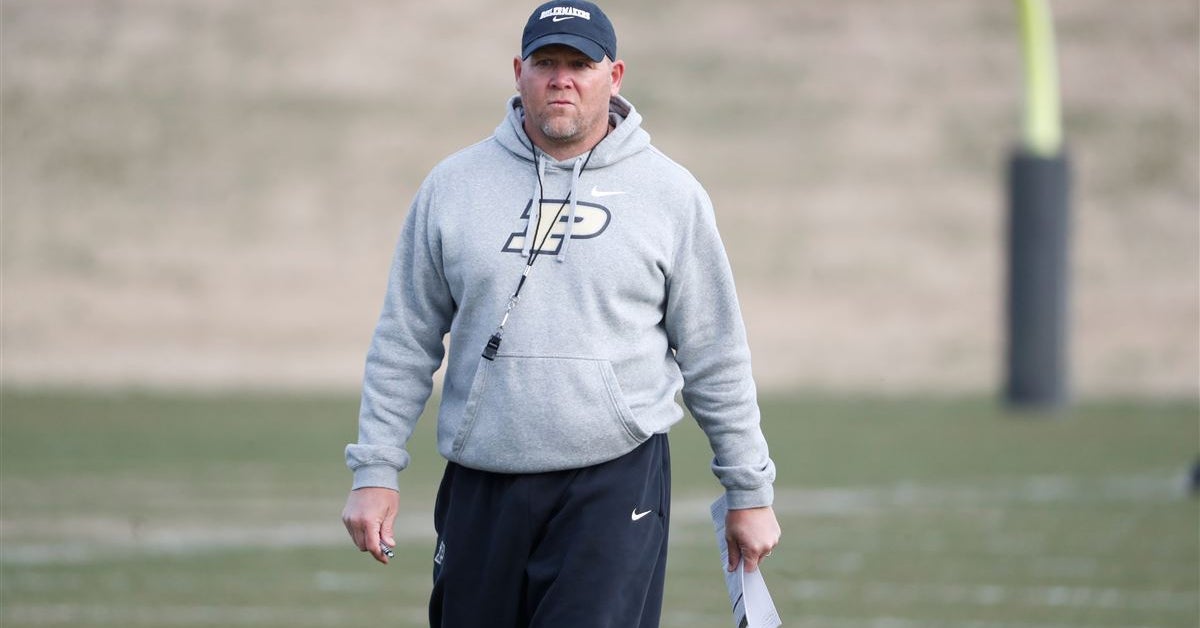
Purdue is officially less than two months away from the 2025 season and the start of Barry Odom’s head coaching tenure in West Lafayette. Odom turned around a struggling UNLV program and, while the task at Purdue may be steeper, he’s shown he can bring success to places that need a rebuild. His time at Missouri was average, but college football looks very different now—especially with the impact of NIL.
At media days across the country, coaches like Deion Sanders made it clear that winning is tied directly to money. Odom won’t have the same resources as programs like Ohio State or Michigan, but he wants to build a hard-nosed team that can compete regardless of recruiting stars or spending.
Purdue hasn’t recruited well in the NIL era, and the 1-11 record reflects that. While underdog stories are easy to root for, the truth is money matters. With the recent House vs. NCAA settlement, schools can now pay players directly via a $20.5 million revenue-sharing cap. Following the ruling, Purdue Athletic Director Mike Bobinski went on the record and clarified that the football program would receive less than the industry-standard 75% of allocated resources, this disadvantage being just another hurdle for Barry Odom to jump in his new job.
Odom acknowledged how much the game has changed in a June press conference. “We’ve changed more rule wise in the last two years than we have in the last twenty-five, and I believe that. But I also know that if you don’t adjust or adapt, you get left behind.” Coaches have always had to evolve, but Odom’s challenge is rebuilding while navigating a landscape most coaches have never seen.
Despite ranking just 47th in the 2025 transfer team ratings via 247Sports, Odom quietly retooled the roster. He focused heavily on the trenches, landing linemen like Bradyn Joiner from Auburn and Marc Nave Jr. from Kentucky. Building a strong front is part of the identity he’s trying to establish.
Odom also brings back a familiar face at quarterback in an interesting situation. Ryan Browne transferred to North Carolina to play under new head coach Bill Belichick, one of the best talent evaluators of all time, who clearly saw potential in Browne. He wasn’t the only quarterback Belichick brought in however, and a crowded room pushed him back to Purdue in pursuit of a starting spot.
Despite a dramatic offseason, Browne has the tools to be a solid Big Ten quarterback and should take over as the starter this season. He’s in a similar position to Odom as both are trying to prove they belong as consistent contenders in the conference. The original transfer seems to be water under the bridge now, with everyone in the program recognizing the redshirt sophomore as a key piece of Purdue’s rebuild.
Purdue doesn’t need a bowl game this year, but it needs to be a consistent bowl team in the near future. The program has history, and fans want to feel like it’s heading somewhere again. Whether Odom is the right guy to lead that charge is still uncertain, and he’s been honest about his own discomfort with where college football is headed. “I can’t say that I agree with everything that we’re doing now in college football, but that’s what the rules are. I’ve had to change my traditionalist thinking. It doesn’t really matter what I believe in, they didn’t ask me to write the rules.”
He’s right. If Purdue wants to compete, it can’t just be on the coaching staff. The administration has to be just as invested. What happened on the field last year wasn’t just on Ryan Walters. Odom appears to be fully bought in, but the athletic department needs to be as well. Purdue won’t ever spend like the top programs, but that doesn’t mean it can’t compete with a smart, balanced roster.
Odom has a task on his hands, but this is the same coach who turned a 10-loss UNLV team into back-to-back bowl appearances, finishing 11-2 in 2024 with a top-20 AP ranking. UNLV isn’t the same stage as the Big Ten, but Odom did exactly what he’ll be asked to do at Purdue: rebuild a struggling program and make it competitive. The Purdue job was attractive to him, and he genuinely seems locked in on turning things around.
While Odom doesn’t have the on-paper resources that Curt Cignetti had when he took over at Indiana last year, the now in-state rival laid out a blueprint for how to revive a program from the bottom. Indiana and Notre Dame are slowly cementing themselves as the standard for football in the state, but Odom has a chance to change that. He may not replicate the exact success Cignetti had at Indiana last season, but he does need to follow a style that clearly works in today’s college football landscape.
It wasn’t that long ago Purdue was in the Big Ten Championship. That game should have been a launching point, but the program hasn’t matched it since. I expect this year’s team to be better than expected. Odom’s group is under the radar, but fun, and that’s more than enough for most fans in year one. He isn’t expected to outspend college football’s giants. He’s expected to bring structure and identity.
Can Purdue compete in the NIL era under Barry Odom? We’re about to find out.
NIL
Argument over ‘valid buisiness purpose’ for NIL collectives threatens college sports settlement
Less than two weeks after terms of a multibillion-dollar college sports settlement went into effect, friction erupted over the definition of a “valid business purpose” that collectives making name, image likeness payments to players are supposed to have. The new College Sports Commission sent a letter to athletic directors last week saying it was rejecting […]
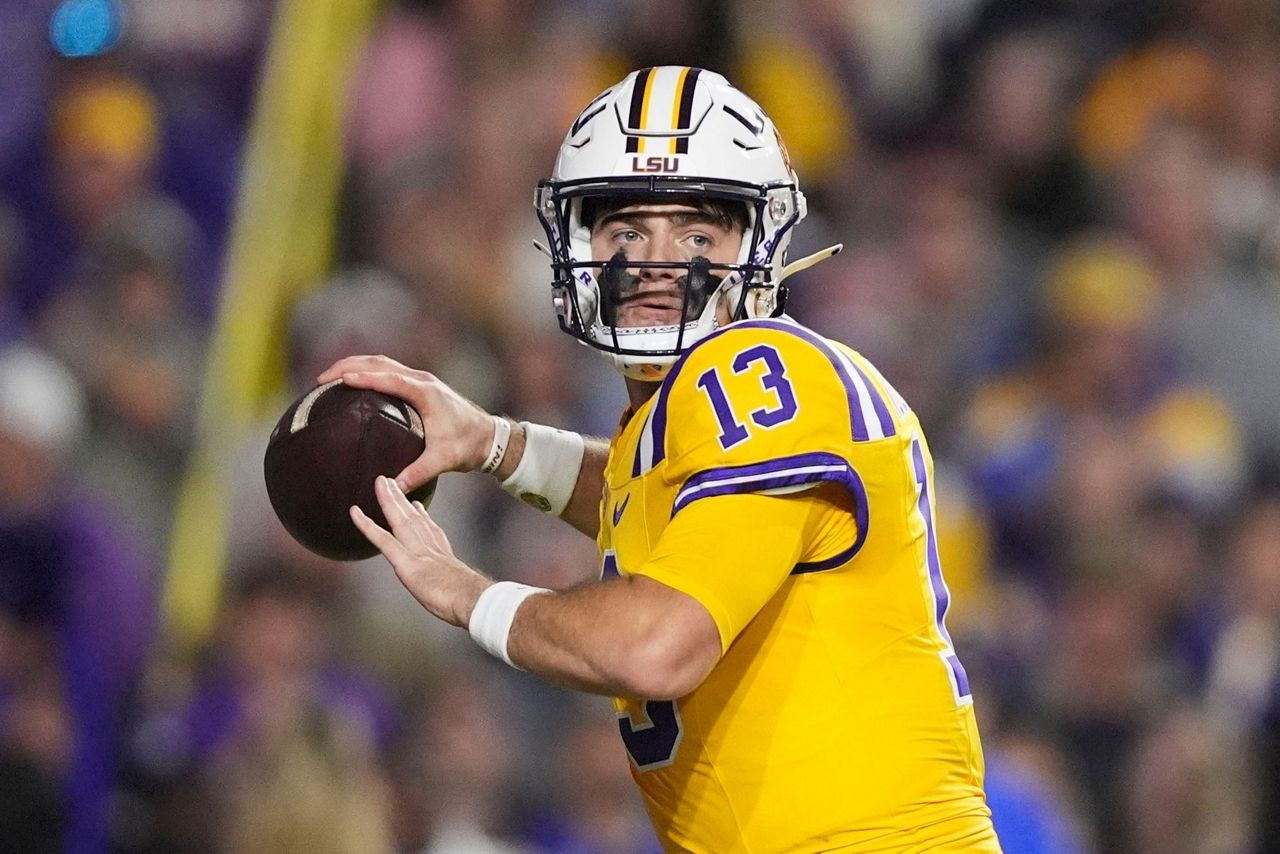
Less than two weeks after terms of a multibillion-dollar college sports settlement went into effect, friction erupted over the definition of a “valid business purpose” that collectives making name, image likeness payments to players are supposed to have.
The new College Sports Commission sent a letter to athletic directors last week saying it was rejecting deals in which players were receiving money from collectives that were created solely to pay them and don’t provide goods or services to the general public for profit.
A lead attorney for the players responded by saying those instructions went against settlement terms and asking the CSC to rescind the guidance.
“This process is undermined when the CSC goes off the reservation and issues directions to the schools that are not consistent with the Settlement Agreement terms,” attorney Jeffrey Kessler wrote to NCAA outside counsel Rakesh Kilaru in a letter obtained by The Associated Press.
Yahoo Sports first reported details of the letter, in which Kessler threatens to take the issue to a judge assigned with resolving disputes involved in the settlement.
Kessler told AP his firm was not commenting on the contents of the letter, and Kilaru did not immediately respond to AP’s request for a comment.
Yahoo quoted a CSC spokesman as saying the parties are working to resolve differences and that “the guidance issued by the College Sports Commission … is entirely consistent with the House settlement and the rules that have been agreed upon with class counsel.”
When NIL payments became allowed in 2021, boosters formed so-called “collectives” that were closely tied to universities to work out contracts with the players, who still weren’t allowed to be paid directly by the schools.
Terms of the House settlement allow schools to make the payments now, but keep the idea of outside payments from collectives, which have to be approved by the CSC if they are worth $600 or more.
The CSC, in its letter last week, explained that if a collective reaches a deal, for instance, for an athlete to appear on behalf of the collective, which charges an admission fee, that collective does not have a “valid business purpose” because the purpose of the event is to raise money to pay athletes, not to provide goods or services available to the general public for profit.
Another example of a disallowed deal was one an athlete makes to sell merchandise to raise money to pay that player because, the CSC guidance said, the purpose of “selling merchandise is to raise money to pay that student-athlete and potentially other student-athletes at a particular school or schools, which is not a valid business purpose.”
Kessler’s letter notes that the “valid business purpose” rule was designed to ensure athletes were not simply being paid to play, and did not prohibit NIL collectives from paying athletes for the type of deals described above.
To prevent those payments “would be to create a new prohibition on payments by a NIL collective that is not provided for or contemplated by the Settlement Agreement, causing injury to the class members who should be free to receive those payments,” Kessler wrote.
___
AP college sports: https://apnews.com/hub/college-sports
Copyright 2025 The Associated Press. All rights reserved. This material may not be published, broadcast, rewritten or redistributed without permission.
NIL
As House attorneys slam NCAA, NIL collectives prepare for legal battle
Go to On3 Home About On3AboutAdvertisersCareersContact SupportCustomer ServicePrivacy PolicyChildren’s Privacy PolicyTerms of Service On3 ConnectTwitterFacebookInstagram The On3 App for college sports fans: © 2025 On3 Media, Inc. All rights reserved. On3 is a registered trademark of On3 Media, Inc. 0
NIL
Best NIL and Transfer Portal Schools in EA College Football 26 Game
A decade ago, when EA Sports shuttered its popular college football franchise, the art of roster management was simple. Players committed, players stayed (for three or four years) and transfers were a rarity more than anything else. The roster in place was largely the roster that was assembled through diligent high school recruiting. To say […]

A decade ago, when EA Sports shuttered its popular college football franchise, the art of roster management was simple. Players committed, players stayed (for three or four years) and transfers were a rarity more than anything else.
The roster in place was largely the roster that was assembled through diligent high school recruiting. To say managing and following it all was a much more trivial task would be an understatement.
As College Football 26 consumes much of our attention, one thing is abundantly clear: Roster management and general awareness are complicated.
Turnover is enormous, and many teams are broken down and rebuilt in a matter of months.
For some, the transfer portal and NIL serve as an enormous negative. For others, especially those willing to spend their way to success, it’s a positive. As the season nears, College Football 26 serves as a way for us to take an inventory of what teams have had the most success acquiring talent.
Here are the teams that stand out.
NIL
ESPN ranks Top 30 head coaches as college football players
Some of college football’s best coaches were players themselves back in the day. Pretty good ones as well, making their name known before moving on to the next level. And once the playing days were over, coaching was the field they got into. ESPN decided to conduct a fun exercise, ranking the top 30 head […]

Some of college football’s best coaches were players themselves back in the day. Pretty good ones as well, making their name known before moving on to the next level. And once the playing days were over, coaching was the field they got into.
ESPN decided to conduct a fun exercise, ranking the top 30 head coaches as players. This is not a hypothetical either, as actual stats and performances are taken into consideration. Let’s check out the full list from Adam Rittenberg here.
Of note, the programs attached to the head coaches are where they currently work. Not the school at which their college football was played.
There was not much doubt about who would take the top spot. Coach Prime starred at Florida State, mainly as a defensive back. His college career propelled him to what turned into a Pro Football Hall of Fame career.
ESPN: “One of the greatest American athletes of the past 50 years, Sanders did it all and did it well at Florida State. He earned first-team All-America honors in his final two years after being named a third-team All-American in 1986.”
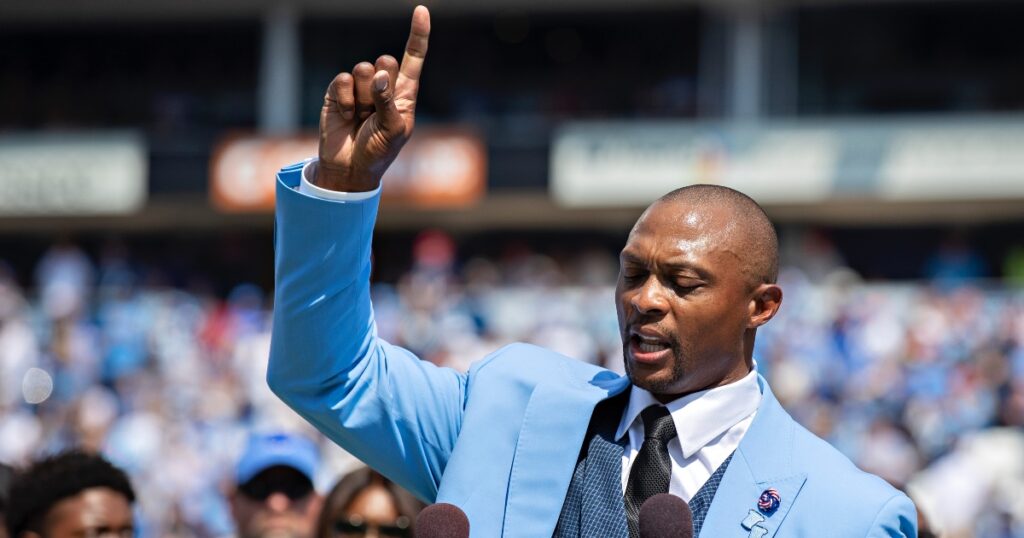
Some might argue George should have the No. 1 spot due to a Heisman Trophy. However, ESPN gave the edge to Sanders due to his “overall athletic exploits.” That’s not to take away from the career George put together at Ohio State.
ESPN: “George captured the 1995 Heisman after a monster season with Ohio State: 328 carries for a team-record 1,927 yards and 24 touchdowns, while adding 47 receptions for 417 yards.”
Somehow, we did not get a quarterback until No. 3. Heupel won a national championship with the Oklahoma Sooners and even got his coaching career started in Norman.
ESPN: “Heupel then led the Sooners to a national title in 2000, recording 3,606 passing yards and 20 touchdowns. He was named AP Player of the Year, won the Walter Camp Award and consensus All-America honors, and was runner-up for the Heisman Trophy.”
Known for producing quarterbacks, Sarkisian was a great player himself at BYU. He led the Cougars to a top-five finish during the 1996 season with a 14-1 record. The lone loss was to Washington in September.
ESPN: “He had great success as a two-year starter, earning All-WAC honors as a junior and being named WAC Offensive Player of the Year and a second-team All-American as a senior.”
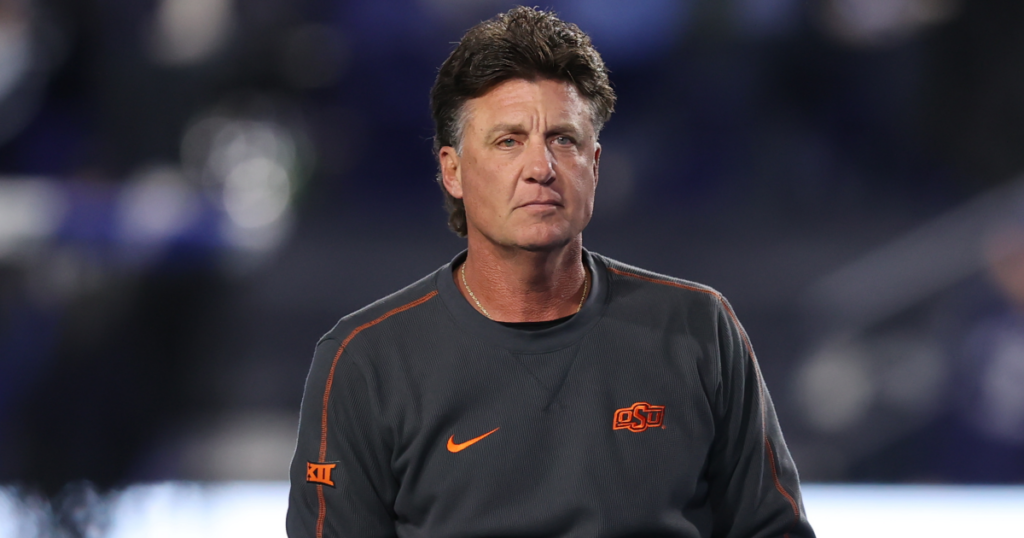
Gundy is the highest-ranked head coach to also play at his current employer. One of the program’s all-time greats, the accolades are there for Gundy as a player and coach.
ESPN: “He started all four seasons and began his career with 138 pass attempts without an interception, then an NCAA record.”
UCLA needed to hire someone to replace Chip Kelly, going with a familiar face. Foster was already a running backs coach on staff but got a promotion to head coach. But he still has a love for the position, knowing a thing or two about success in Los Angeles.
ESPN: “A workhorse running back for UCLA, Foster left with the team record for career carries (722) and ranked in the top five for career touchdowns (44), rushing yards (3,194) and scoring (266 points).”
Shockingly enough, Smith left his alma mater to accept the Michigan State job. Folks in Corvallis still have to love him, though, as Smith set plenty of records in an Oregon State uniform.
ESPN: “Smith is one of the great underdog stories among current college coaches. He came to Oregon State as a walk-on quarterback … Smith would start the final 38 games of his career, and set Oregon State records for passing yards (9,680), touchdown passes (55) and single-season passing yards (3,053 yards in 1999).”
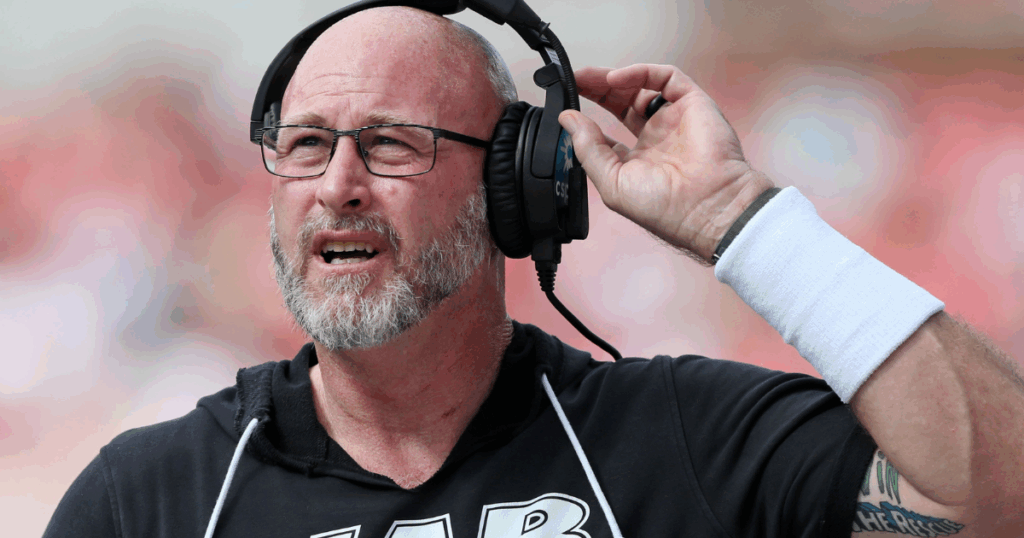
Dilfer was a West Coast kid growing up, playing his college ball at Fresno State. Eventually moving to the NFL, Dilfer won a Super Bowl with the Baltimore Ravens.
ESPN: “Part of the impressive Fresno State quarterback tradition, Dilfer started for two and a half seasons with the Bulldogs, helping the team to three outright or shared WAC titles.”
Frost was a rare transfer back in the day, moving from Stanford to Nebraska. Once in Lincoln, the achievements began to stack up, both individually and for the Cornhuskers.
ESPN: “Frost became Nebraska’s QB1 in 1996 and had 22 touchdowns (13 pass, 9 rush), winning Big 12 newcomer of the year. In 1997, he became Nebraska’s first QB to eclipse 1,000 yards in both passing and rushing yards as he helped the team to a national title.”
One of two quarterbacks Texas played in the early 2000s, Applewhite had an early impact during his days on the 40 Acres. And as ESPN points out, plenty of stats still have Applewhite’s name in the record books.
ESPN: “He left with Texas records for career passing yards (8,353), single-season passing yards (3,357 in 1999) and career touchdown passes (60), and still ranks in the top five in many categories.”
11. Timmy Chang, Hawai’i
12. Kyle Whittingham, Utah
13. GJ Kinne, Texas State
14. Michael Desormeaux, Louisiana
15. Kirby Smart, Georgia
16. Jeff Brohm, Louisville
17. Trent Bray, Oregon State
18. Sonny Cumbie, Louisiana Tech
19. Marcus Freeman, Notre Dame
20. Mario Cristobal, Miami
21. Sam Pittman, Arkansas
22. Thomas Hammock, Northern Illinois
23. Kalen DeBoer, Alabama
24. Barry Odom, Purdue
25. Brent Key, Georgia Tech
26. Jay Norvell, Colorado State
27. Justin Wilcox, Cal
28. Eric Morris, North Texas
29. Ryan Beard, Missouri State
30. Luke Fickell, Wisconsin
-

 Technology3 weeks ago
Technology3 weeks agoPet fitness and wellness trends for a healthier and happier dog
-

 College Sports3 weeks ago
College Sports3 weeks agoWAC to Rebrand to UAC, Add Five New Members in 2026
-

 College Sports3 weeks ago
College Sports3 weeks agoA new era of Dickinson hockey begins behind the bench – The Dickinson Press
-

 Motorsports2 weeks ago
Motorsports2 weeks agoWhy Cosmetics are Making Up for Lost Time in Women’s Sports
-

 Health3 weeks ago
Health3 weeks agoFlorida assault survivor shares hope for change with new mental health law
-

 Motorsports2 weeks ago
Motorsports2 weeks agoTeam Penske names new leadership
-

 Sports3 weeks ago
Sports3 weeks agoHow to Market FAST Sports Content to New Audiences
-

 Sports6 days ago
Sports6 days agoNew 'Bosch' spin
-

 Motorsports3 weeks ago
Motorsports3 weeks agoNASCAR This Week – Patriot Publishing LLC
-

 Youtube2 weeks ago
Youtube2 weeks agoBREAKING: NBA MVP Shai Gilgeous-Alexander signs the RICHEST annual salary in league history












 (via @arenasporttv/TT)
(via @arenasporttv/TT)




















